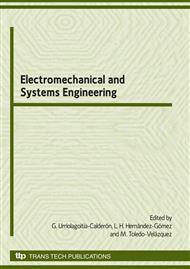p.81
p.89
p.95
p.103
p.109
p.117
p.121
p.127
p.139
Parametric Analysis of Perfect Matched Layer Model of Finite Difference Time Domain Method
Abstract:
The parametric analysis of the electrical conductivity distribution for the Perfect Matched Layer (PML) method, is discussed in this communication. The Berenger’s PML defines a new computational space around the area of interest yielding to reduce any undesirable reflection that may perturb the main computational domain. The optimal parameters values for the conductivity distribution are obtained in order to provide lower levels of reflection, given raise to model infinite electromagnetic propagation spaces and as a consequence, to optimize the computing resources.
Info:
Periodical:
Pages:
139-144
Citation:
Online since:
August 2009
Price:
Сopyright:
© 2009 Trans Tech Publications Ltd. All Rights Reserved
Share:
Citation:


